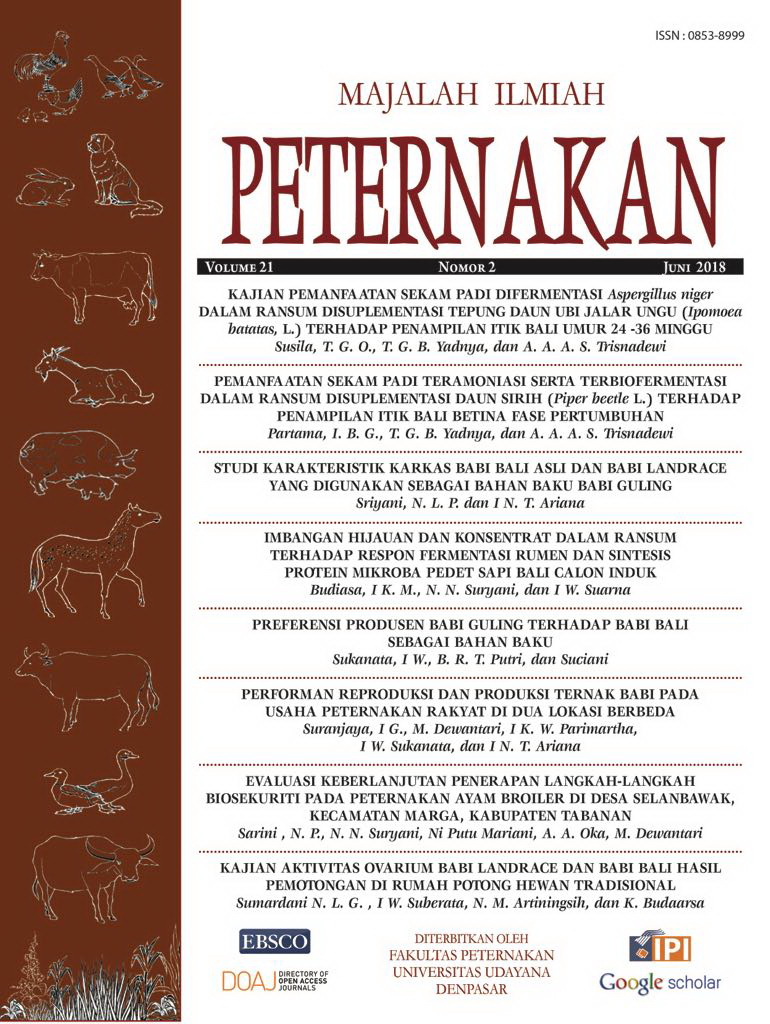IMBANGAN HIJAUAN DAN KONSENTRAT DALAM RANSUM TERHADAP RESPON FERMENTASI RUMEN DAN SINTESIS PROTEIN MIKROBA PEDET SAPI BALI CALON INDUK
Abstract
In order to fulfill the domestic meat requirements and reduce imports so government continually develop local
beef cattle based on their quantity and quality of meat. Among the local cattle in Indonesia, Bali cattle is the most
favourite cattle (32.31%) considering on its meat quality. There were 12 calves used in this research with 100 kg
of average body weight. The treatments were diet with 40% concentrate and 60% king grass (A); 45% concentrate
and 55% king grass (B); 50% concentrate and 50% king grass (C); 55% concentrate and 45% king grass (D). The
experiment was design in a completely randomized block design with four treatments and three replicates. The
variables measured were rumen fermentation as of pH, NH3, total and pastial of VFA (acetic acid, propionic acid
and butyric acid), microbial protein synthesis and protozoa populations. It showed that treatment D produce the
highest NH3 and total VFA, 14.66 mMol, and 165.38 mMol respectively compared to other treatments. Propionic
acid was 27.87 mMol the highest in treatment D and 368.62 g/h/d microbial protein synthesis. It can be concluded
the higher proportion of concentrate in the bali heifer calves so the more energy supply, in this case, SPM availability
for the host animal is higher.






